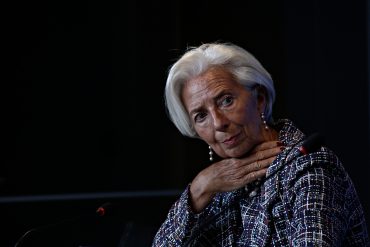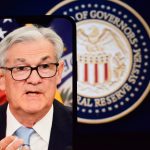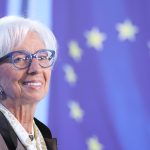

Powell, Lagarde, and the Impossible Performance of Monetary Communication
Central bankers used to do their work in splendid isolation. “Never explain, never excuse,” Montagu Norman, who was the governor of the Bank of England from 1921 to 1944, is reputed to have had as a motto. Until 1994, all that the Federal Reserve’s rate-setting Federal Open Market Committee said after a meeting was, “The FOMC meeting has ended.” Traders had to observe movements in the New York money markets to puzzle out what the Fed had decided.
There must be days when they long for that simpler era. Today, central bankers regard communication as one of their top priorities, but they struggle with it. Part of the problem is that they need to address two very different constituencies. In speaking to knowledgeable financial professionals who parse (and trade on) their every word, they have to speak with subtlety and restraint. In reaching out to the general public, though, they need to speak boldly, maybe even colorfully, to fight through inattention and misunderstanding while countering populist diatribes and conspiracy theories spread on social media.
It’s not going great so far. “For most central bankers, communicating with the public is like landing on a strange planet,” Alan Blinder, a Princeton economist who is a former member of the Fed’s Board of Governors; Michael Ehrmann, the head of monetary policy research at the European Central Bank, and two co-authors wrote last year in an article in the Journal of Economic Literature.
For most central bankers, communicating with the public is like landing on a strange planet.
Jerome Powell, the Fed chair, wears purple ties when he speaks to the press after policy meetings so people won’t think he’s a Democrat (blue tie) or a Republican (red tie). But his care in haberdashery hasn’t protected him or the Fed from accusations of incompetence, evil or both. One popular meme has a wild-eyed Powell spraying dollar bills with the caption, “Money printer goes brrrr.” When Powell said he was seeking a soft landing for the U.S. economy, a memester put out a plane engulfed in flames on a runway. Then there’s President Donald Trump, who in April called him a “major loser” whose “termination cannot come fast enough.” (After markets plunged in response, Trump partially relented.)
Powell has it worst because of his proximity to Trump, but other central bankers are also under pressure. Christine Lagarde, president of the European Central Bank, continues to be trolled for telling Ireland’s RTÉ network in 2022 that inflation had come “pretty much from nowhere.” At the Bank of England, Governor Andrew Bailey is on the defensive against influencers saying things like, “Your money is not safe in them banks, people.”
Unfortunately for them, controversy and conspiracy attract more eyeballs than whatever central banks are putting out. “More subjective tweets and tweets with stronger language get retweeted more often,” Alena Wabitsch, a doctoral student at the University of Oxford, and the ECB’s Ehrmann wrote in 2021.

Engaging a wider audience can help “where trust and engagement are low,” Andrew Haldane, then the chief economist of the Bank of England, and two co-authors wrote in 2020. But messages that are oversimplified and overconfident “could ultimately lead the public to be disappointed if the central bank doesn’t deliver on its communicated forecasts,” they warned. They said bankers should be guided by what they called “the 3 E’s of public communication,” namely explanation, engagement and education.
To reach people at their kitchen tables, central bankers need to develop messages that are tailored for a mass audience, yet are consistent with the messages delivered to the markets. As yet, few have mastered that trick. “It appears that a certain level of acting skill may be helpful for ensuring that the public receives the policy message fully and accurately,” Yuriy Gorodnichenko of the University of California-Berkeley and two co-authors wrote in a 2023 article in the American Economic Review.
Central bankers have two good reasons for improving their communication. One is that monetary policy becomes more effective when both traders and households believe that the central bankers know what they’re doing. Expectations that the central banks will succeed in controlling inflation can become a self-fulfilling prophecy: Companies will restrain their price increases and workers will hold back on asking for big pay hikes if they believe that the central bank will quickly get inflation under control.
The public doesn’t trust the message. The markets over-interpret it. No one wins.
Second, simply to earn or keep legitimacy central bankers need to communicate that they’re responsive and accountable. That’s not an easy message to get across, given that central bankers have spent the past couple of decades trying to distance themselves from their governments. Their argument for independence is that lawmakers, prime ministers and presidents are overly tempted to juice up economic growth so they can get re-elected, even if doing so causes inflation to get out of control.
Central bankers argue that insulating themselves from politics allows them to make decisions that politicians run away from, such as raising interest rates to quell inflation, that might hurt in the short run but will pay off in the long run. Central bankers are happy to take orders from the elected government on the ultimate objectives of strong growth and stable prices, but they want to be left alone about how to achieve those objectives.
Try getting that subtle concept across to a general audience that’s paying little to no attention, though. Most people don’t spend a lot of time thinking about what, say, Kazuo Ueda (governor of the Bank of Japan) is up to. Many don’t even have a clear idea of what central banks do. That’s hard to explain in the best of circumstances, and these aren’t the best of circumstances. (Exhibit #1: Donald Trump.)
A large part of the public doesn’t even accept that raising interest rates is a legitimate tool of the central banks for lowering inflation. In a survey of 6,500 U.S. households, researchers found that 57 percent of respondents thought that a rise in the federal funds rate, the short-term interest rate the Federal Reserve controls, would lead to a rise in inflation.
The respondents who worried that high rates would raise prices weren’t entirely wrong; it’s true that higher interest expenses feel like inflation. But only 19 percent of the academic and non-academic experts in the same study thought that on net, higher interest rates would raise inflation. Regardless of who’s right, the point is that central bankers have to expect strong pushback even when they follow standard practice.
Alas, the communication problem isn’t necessarily solved by more communication. The economists David-Jan Jansen and Matthias Neuenkirch found in a survey of Dutch households that “more frequent readership of popular newspapers is associated with slightly less accurate inflation perceptions.”
Hearing more about central banks can intensify pre-existing biases, positive or negative. For a study publishedin 2021, Carola Binder of the University of Texas showed people a tweet from Trump in his first term urging the Fed to cut interest rates along with a Washington Post article explaining that the Fed is independent. The combination “seemed to have a polarizing effect,” Binder wrote to me in an email. “It increased the share of respondents who were highly confident in the Fed and not confident in the president, as well as the share who were highly confident in the president and not confident in the Fed.”
After the global financial crisis struck in 2008, some central bankers tried to stimulate their economies through forward guidance, which was essentially a promise that they would keep interest rates low for a long, long time, even after growth resumed and inflation was ticking up. But people had trouble believing the bankers would act like Odysseus, tying themselves to the mast of a promise not to raise rates even when it made sense to do so.
The Swiss economists Thomas Lustenberger and Enzo Rossi concluded in 2020 that more communication and forward guidance by central bankers made short-term forecasts by the market better but “worsened the quality of long-term interest rate forecasts.” Central bankers seem to have come to that conclusion themselves, Lustenberger wrote to me in an email. Forward guidance has fallen from favor as central bankers focus more on the data in front of them and less on the implications of economic theory.
Controlling inflation is hard. Explaining it might be harder.
For central bankers, caution is the order of the day. Ben Bernanke, the former Fed chief, concluded in a review that the Bank of England should rely less on its central forecast and give more weight to alternative scenarios. But doing that could create communication problems – say, if finance people or the general public give undue weight to some extreme possibility.
“We’re thinking through how do you square your use of scenarios to communicate uncertainty without actually creating lightning rods of focus for particular examples,”
Clare Lombardelli, the Bank of England’s deputy governor for monetary policy, who is sorting through the Bernanke review, told a Washington audience in April.
Maybe the central banks need to bring in outside experts to help manage their messaging. Actors, perhaps?








